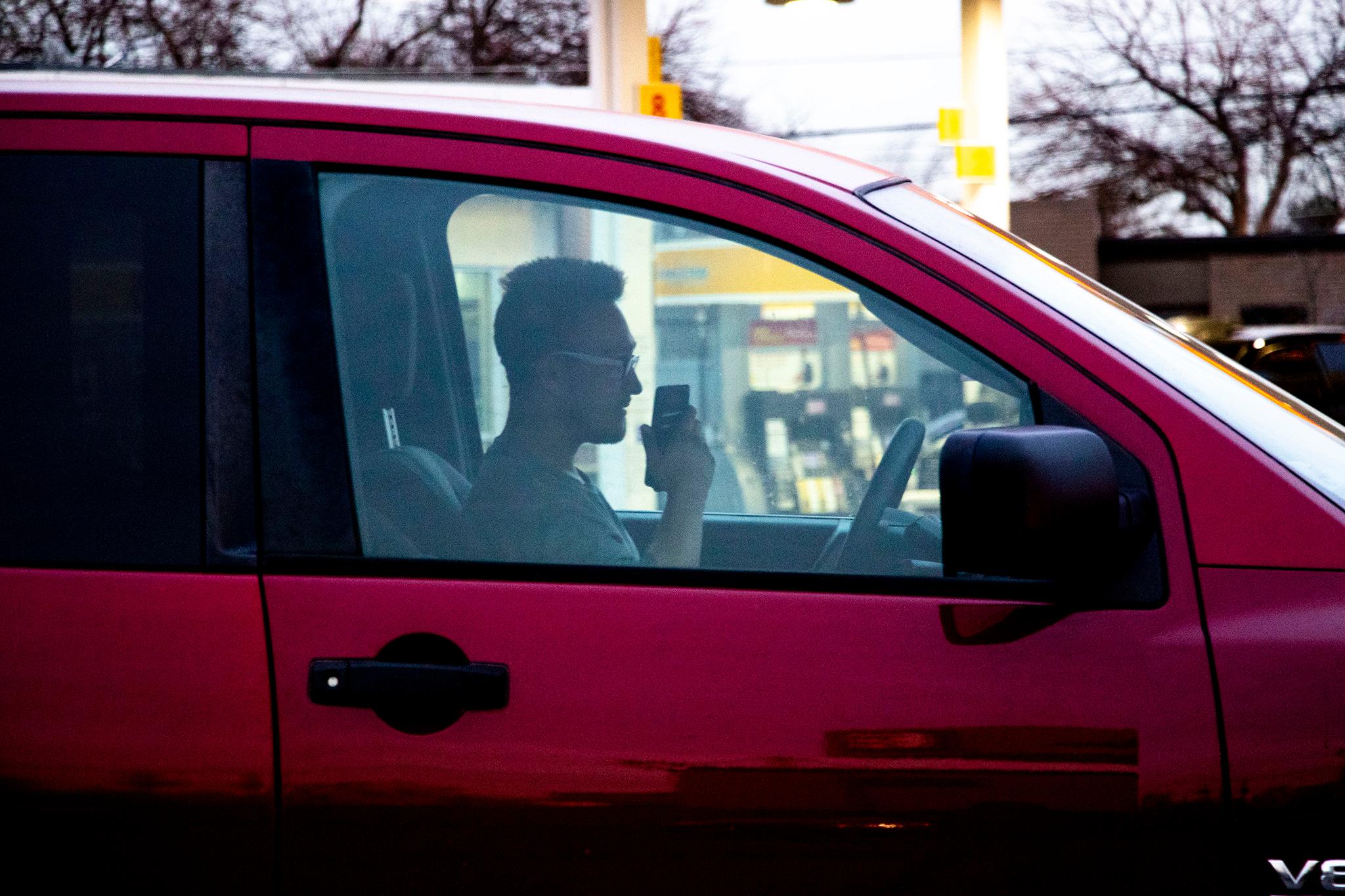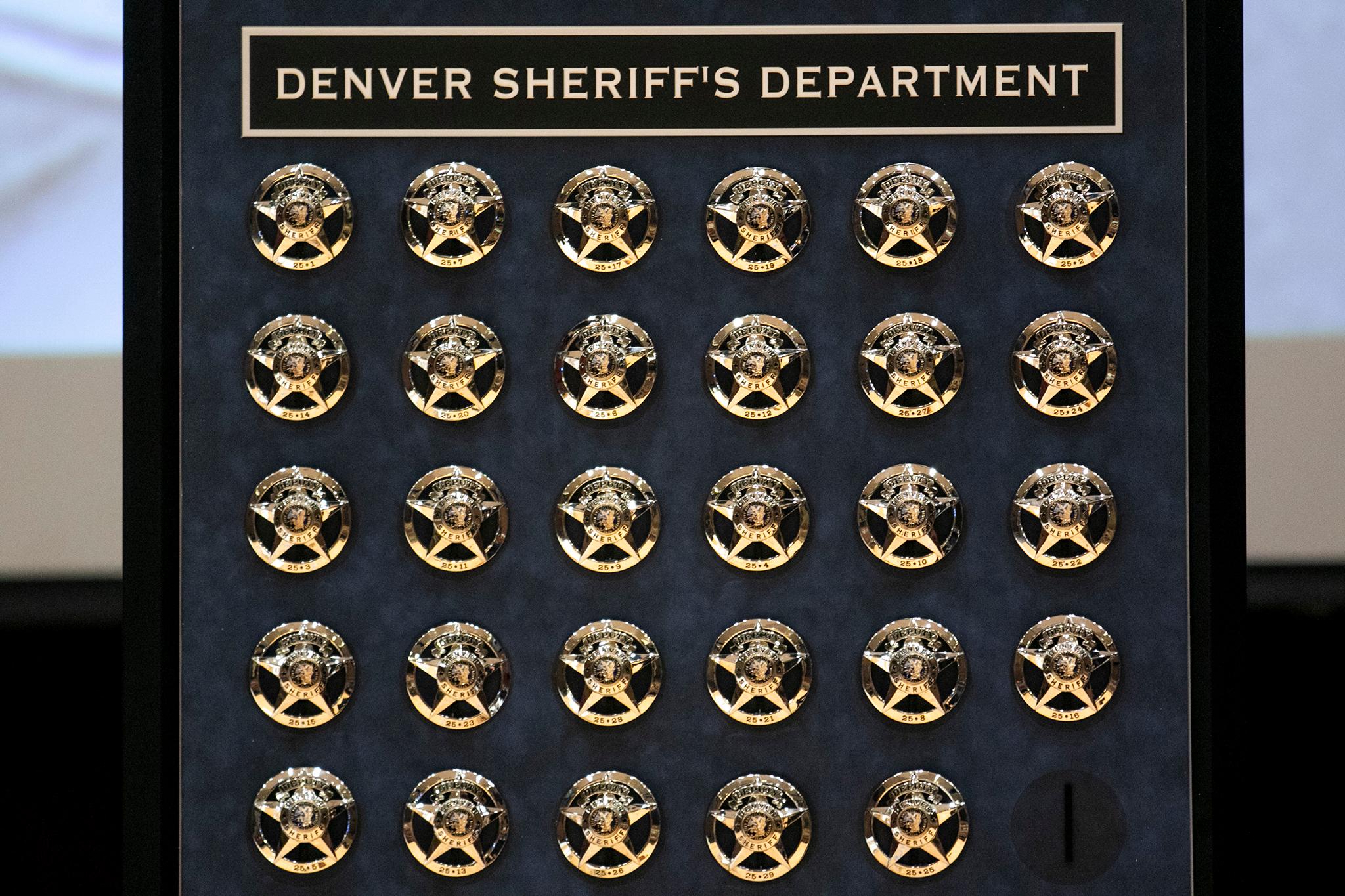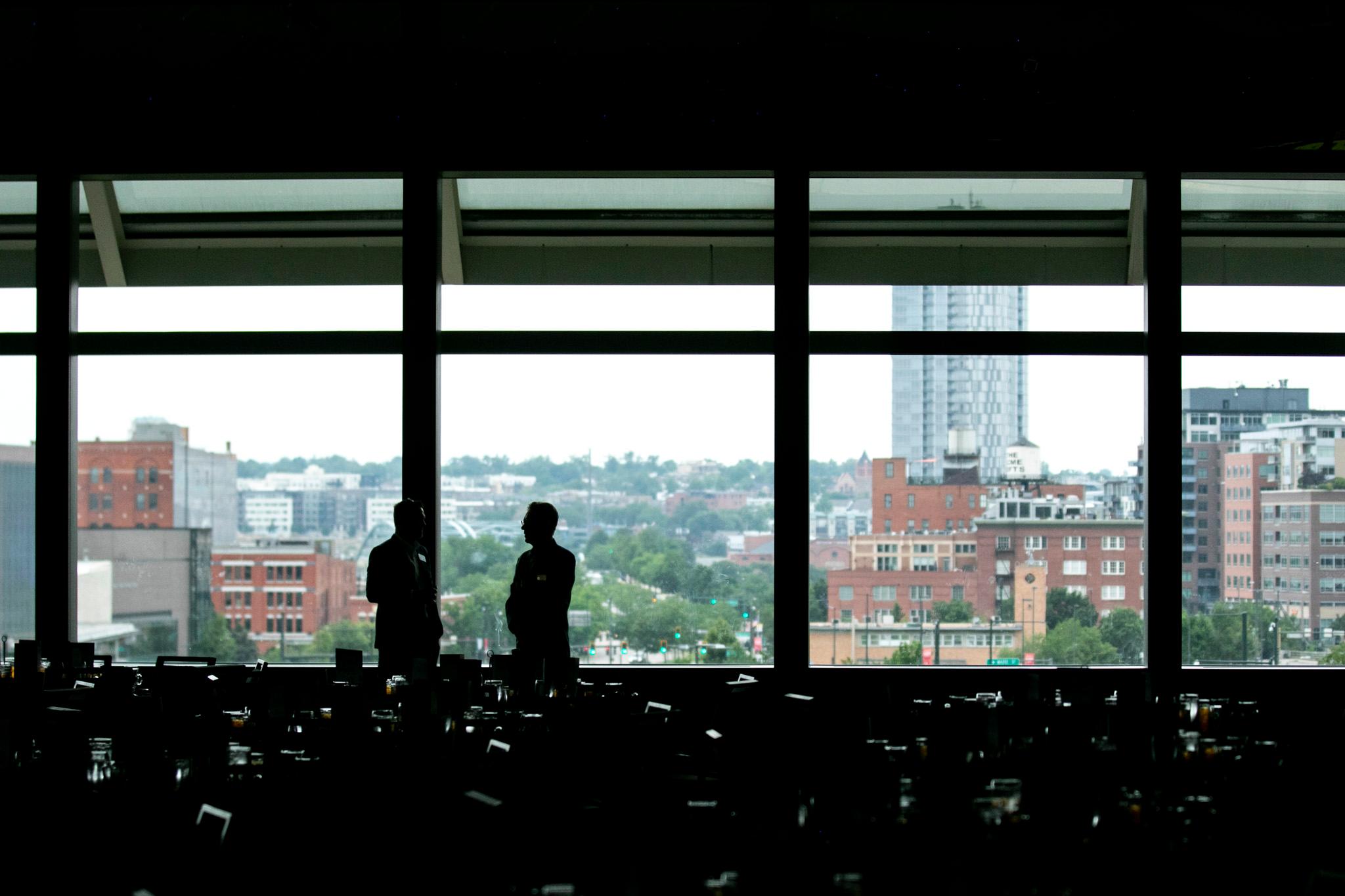Distracted drivers in Denver have been difficult to count, catch or punish -- at least before it's too late -- ever since the smartphone era began.
Police officers, lawmakers and the general public agree that looking at little computers while operating multi-ton machines is bad. That and other acts that divert eyes from the street result in crashes, life-changing injuries and death.
"It's killing people, basically. Not only killing but maiming," said Susan Dane, whose two good friends, Brian and Jacquie Lehner, were killed on their motorcycle by a distracted driver in 2016. "And the impact that has on families and lives -- the bottom line is we want to make Colorado roads safer for everyone."
Dane, who lives in Aurora, heads up Coloradans Organized for Responsible Driving, one of the groups lobbying for stricter texting and driving laws.
"Cell phone use 24-7 has become acceptable behavior," Dane said. "Not when you're driving, it's not."
Colorado state law already dictates what motorists are allowed to do in terms of texting while driving: Nothing. It's banned. But law enforcement has to see someone texting and witness dangerous driving in order to enforce it. Colorado has no law requiring hands-free devices like Bluetooth, unlike 22 other states, though such a bill will be introduced at the Capitol this session.
In 2017, of the more than 34,000 fatal crashes nationwide that killed more than 37,000 people, distracted driving was reported 9 percent of the time and cell phone use accounted for only a sliver of those crashes, 434, according to the National Highway Traffic Safety Administration. But "there are no reliable estimates of the number of crashes caused by distracted drivers," according to the Insurance Institute for Highway Safety, which studies the phenomenon yearly.
People who investigate crashes and who make laws say distracted driving keeps happening because of bad decisionmaking driven by an unhealthy addiction to digital devices, reactionary laws, questionable enforcement and a lack of good data.
In fact, we have no official idea of how many Denver drivers repeatedly text, shave and put on makeup, risking their lives and the lives of others. And so we have no official idea of how often distracted driving causes crashes, injuries and deaths.
Concerns over personal privacy and discrimination also play a role in how distracted driving is treated in the eyes of the law, Denverite found.
Counting distracted drivers isn't hard on its own, since so many people do it out in the open all day long.
Denverite reporters spent an hour each at five busy intersections, getting a glimpse of what drivers are doing along with their driving. It seems like a basic way to measure the problem, but simple observation is also how the National Highway Traffic Safety Administration measures it.
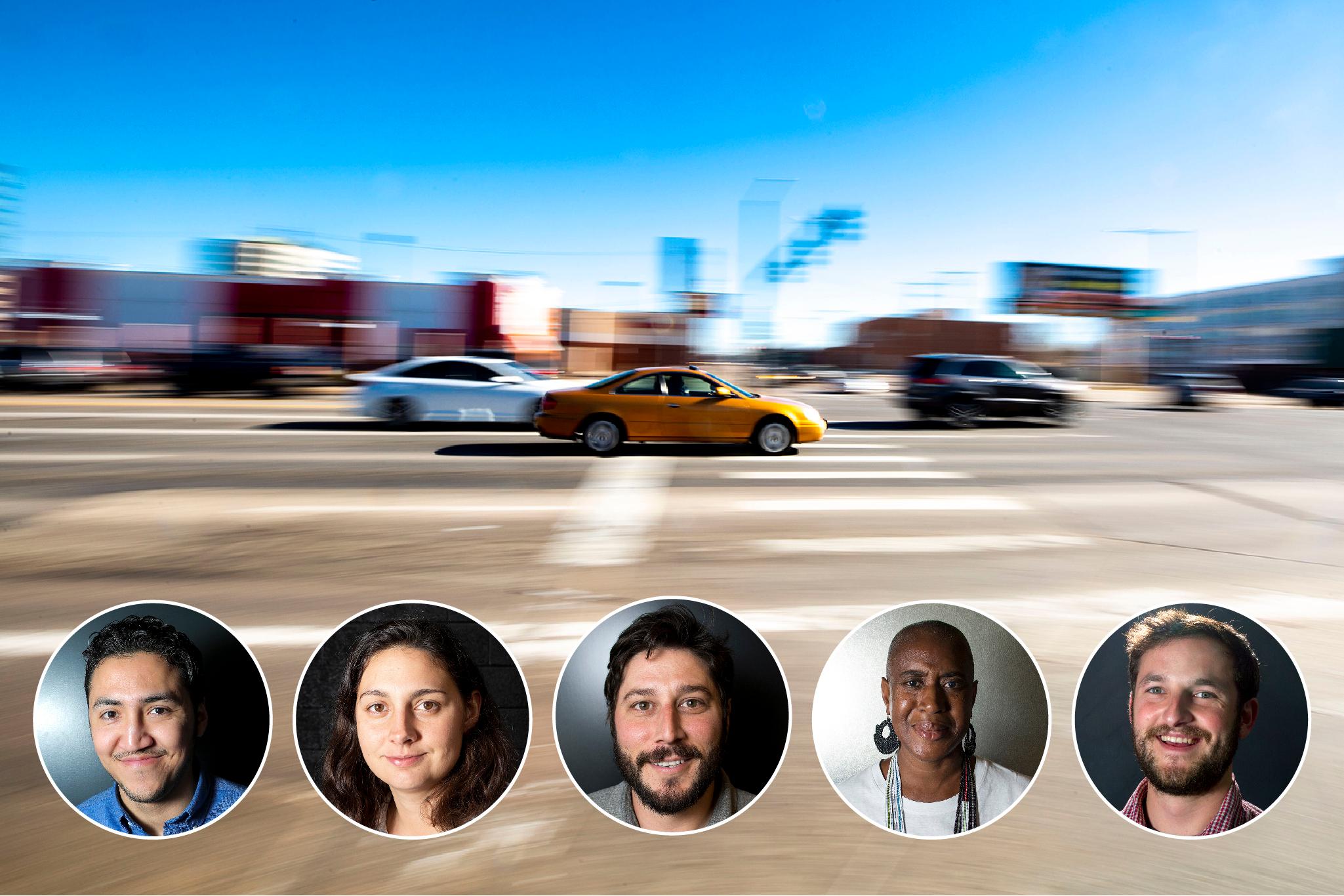
In that hour -- between about 4 and 5 p.m. when crashes are most prevalent in Denver according to Denver Police Department data -- Esteban counted 37 distracted drivers at Colorado Boulevard and Evans Avenue in University Park. Kevin tallied 41 at Federal Boulevard and Florida Avenue in Mar Lee. Donna scored 57 at 6th Avenue and Broadway in Baker. Dave totaled 101 at 15th Street and Blake Street in LoDo. Lindsay won, with 118 at Quebec Street and Martin Luther King Junior Boulevard in North Park Hill.
We counted distracted driving as anyone visibly using their phones or other devices and doing anything else that took their eyes off of the road. The NHTSA's definition is broader. It includes people talking on the phone even with a hands-free device. Our experiment easily resulted in an undercount of drivers who were not entirely focused on driving. It was difficult for the single reporter at each corner to watch all the lanes of traffic. And an awful lot of Denver drivers have some pretty dark windows.
Few people were trying to hide that they were talking on their phones. Most held the devices in front of their mouths, as if they were DJs at a radio station microphone.
We saw a driver using both hands to fiddle with a vape pen, presumably steering by knee. Another looking at a dog at the side of the road rather than at the road. Another reaching for something on the floor. And one rude gesture.
The middle finger was shown for unknown reasons to Kevin by a passenger, so we wouldn't count even if we could agree it was a case of distraction. What we did count between on Jan. 16 were drivers whose attention was shared or monopolized by something -- in the vast majority of cases a cell phone -- other than the traffic.
We tried to spread throughout the city and choose intersections in crash-prone areas during the crashiest hour in Denver. These were busy corners. According to city figures, for example, more than 25,000 cars traveled southbound on Broadway at 6th every day last May, and another 22,000 headed east on 6th daily at that intersection that month.
What we didn't see were crashes. Denver police say no drivers in crashes at any time that Thursday anywhere in the city were cited under Colorado's distracted driving law, which makes it illegal, except in an emergency, for anyone to text while driving. The law also makes it illegal for anyone under 18 to use a cell phone in any way, unless it's an emergency. Penalties can include jail time if the crash leads to injury or death, but it's generally a $50 ticket.
The current law against texting while driving lets people text while driving.
Colorado's law was written to make texting behind the wheel a secondary offense. In practice, that means officers can only cite motorists if they see them texting or surfing the web and witness "careless and imprudent" driving, as the law puts it.
"It doesn't prevent unsafe road conditions. It only helps after the fact," said Rep. Dylan Roberts, who is co-sponsoring a stricter distracted driving bill at the Capitol this session that would require motorists to use a phone's speaker function or other hands-free devices.
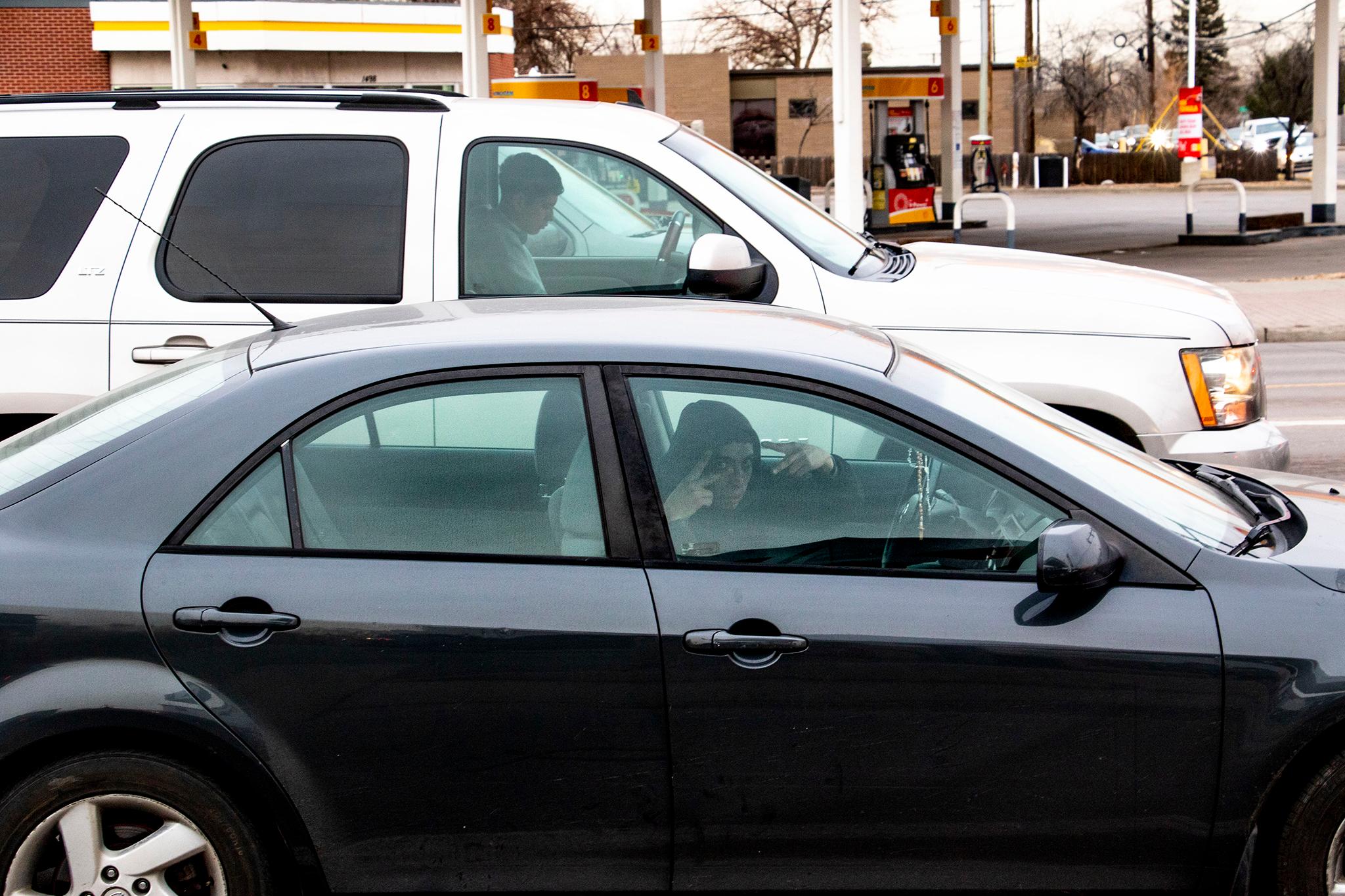
Senate Bill 20-65 was introduced by now-retired state Sen. Lois Court, but Roberts and Court's successor, Sen. Chris Hansen, told Denverite he or another lawmaker will pick up the baton.
"The goal of this bill is to prevent the unsafe driving from happening in the first place," said Roberts, a deputy district attorney for Eagle County who says he knows gruesome and intimate details about crashes because he's seen hundreds of crash reports come across his desk.
There's no doubt that distracted driving leads to traffic deaths and injuries, according to the Insurance Institute for Highway Safety, which studies the phenomenon yearly. But the jury is still out on whether hands-free laws like the one making its way through the Colorado Capitol reduce crashes -- even though they reduce cell phone use -- according to IIHS research. The group reasons that drivers are distracted by things other than cell phones and that crash avoidance technology is more effective than cell phone bans.
Colorado's chapter of the American Civil Liberties Union has cited findings like those in its opposition to distracted driving bills, including SB-65. Pulling people over people for looking at their cell phones is a "slippery slope" towards a "nanny state" that will become pretext for harassing minorities, said Denise Maes, policy director for ACLU Colorado.
"I just worry that it's going to be another reason to pull over brown and black people," Maes said. "It's really that simple."
Last year was Denver's deadliest since 2000. Denver police cited only five people with driving while distracted by a phone.
Seventy-one people lost their lives driving, walking, biking, motorcycling and scooting around the city in 2019. More than 500 crashes resulted in seriously injured people -- a data point safe streets advocates say is as telling as fatalities because close calls can go either way -- according to crash data.
According to Denver Police Department data, the law was invoked 44 times over the last two years -- five times in 2019 and 39 times in 2018. That doesn't mean people were caught driving distracted only 44 times, said Lt. Robert Rock, who heads Denver's crash investigation unit. It means officers often chose to use the statute that many times because a more serious crime was involved: careless driving resulting in death or injury, for instance, or drunk driving.
"Distraction might have been a contributing factor, but we're going to hit you for the careless driving violation and then, you know, they'll go to court and deal with those charges," Rock said.
That wrinkle in how distracted driving is -- and is not -- documented is why the scourge of distracted driving is felt anecdotally but not understood on a deeper level. There's little reliable data. A new, more nuanced crash report form should help. Rock said it will allow officers to record information less bluntly.
Of course, police can cite people for multiple things. The vast majority of the citations came alongside moving violations but a few were paired with DUIs. One was paired with serious bodily injury. It's up to police officers whether to list distracted driving as the cause of a crash in the first place. It's up to city prosecutors whether they want to pursue that path.
Someone crashes his car. Someone else is injured or dead. How do police know if a phone was involved? Most of the time, they don't.
Lt. Rock walked Denverite through the standard crash investigation with the caveat that each one is unique. Officers rarely pursue hard evidence as to whether a cell phone was used just before a collision because of "constitutional" considerations, Rock said. They might ask motorists if they were using a device or to volunteer their phone for inspection, he added, but motorists don't have to comply.
Officers have to abide by search and seizure laws. That means finding a reason to believe the driver was texting before getting a warrant -- probable cause, said Rock.
"If we get to the scene and there's a fatal crash and no witnesses that can tell us whether they were doing that or not, we don't have any basis to seek a warrant on that," Rock said.
Rock said sometimes no other logical explanation is enough of a probable cause, like when the weather is clear and the roads are dry, yet a car is overturned on Colfax Avenue.
Like looking at people's phones, getting phone records from carriers is similarly rare, he added.
Rock believes a hands-free law would "be helpful to an extent" but would not stop distracted driving. With a dearth of solutions to a mammoth problem, the crash investigator is reduced to pleading with the public: "We would love to have the motoring public put their phones down and use that do-not-disturb feature."
